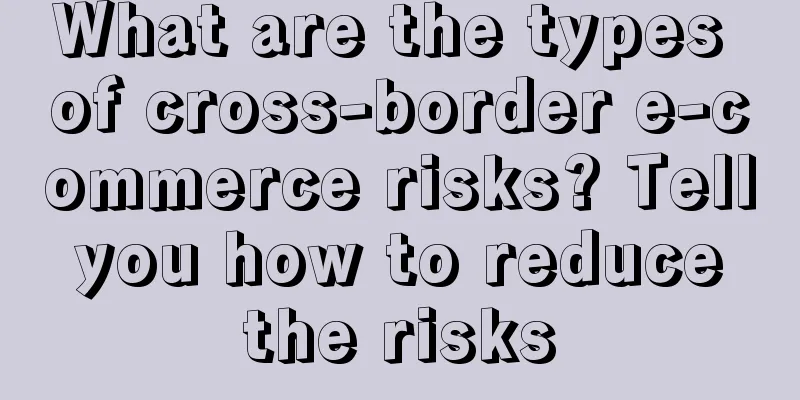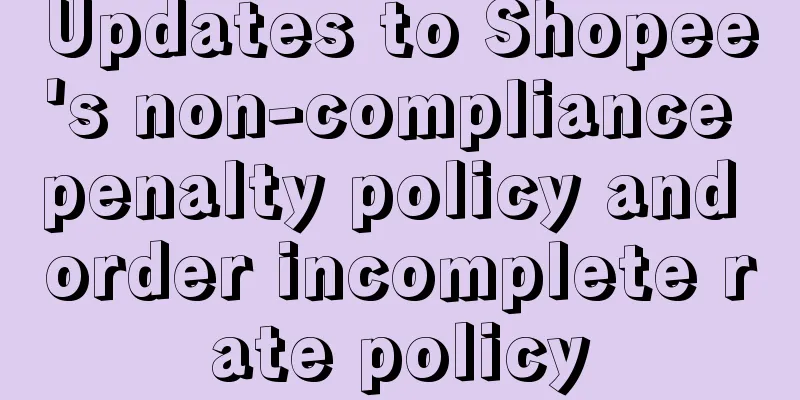What are the types of cross-border e-commerce risks? Tell you how to reduce the risks

|
With the progress of globalization, cross-border e-commerce has become the choice of more and more consumers and sellers. However, compared with traditional e-commerce, cross-border e-commerce faces some special risks. This article will discuss this issue and introduce how to reduce the risks of cross-border e-commerce. 1. What are the types of cross-border e-commerce risks? Cross-border e-commerce is an emerging business model that sells domestic goods to overseas markets through the Internet, thereby achieving cross-border trade. However, cross-border e-commerce also has some risks, mainly including the following types: Legal risks: Cross-border e-commerce involves the laws and regulations of different countries. If sellers do not understand the laws and regulations of the target market, they may face some legal risks, such as trademark infringement, intellectual property infringement, etc. Logistics risks: Cross-border e-commerce needs to transport goods to overseas markets through international logistics. Some risks may arise during the logistics process, such as loss, damage, and delay of goods. Exchange rate risk: Cross-border e-commerce involves currency exchange. If the exchange rate fluctuates greatly, it may affect the seller's profits. Market risk: Economic, political, cultural and other factors in the target market of cross-border e-commerce may have an impact on sales. If the market environment changes, it may affect the seller's business. Brand risk: Cross-border e-commerce needs to build its own brand. If the brand is not well-known, it may face some competitive pressure. 2. How to reduce the risk? To reduce the risks of cross-border e-commerce, sellers can take the following measures: Understand the laws and regulations of the target market: Sellers should understand the laws and regulations of the target market and avoid violating local laws and regulations to reduce legal risks. Choose a reliable logistics service provider: Sellers should choose a reliable logistics service provider to ensure that goods can be transported to overseas markets safely and promptly, thereby reducing logistics risks. Take exchange rate risk management measures: Sellers can take some exchange rate risk management measures, such as locking the exchange rate in advance, using foreign exchange derivatives, etc., to reduce exchange rate risks. Continue to pay attention to market dynamics: Sellers should continue to pay attention to the dynamics of the target market and adjust sales strategies in a timely manner to reduce market risks. Build your own brand: Sellers should build their own brand, improve brand awareness and reputation, and thus reduce brand risk. Cross-border e-commerce faces risks in logistics, payment security, intellectual property rights and market supervision. In order to reduce these risks, cross-border e-commerce should choose reliable logistics partners to ensure the safe transportation of goods; adopt safe and reliable payment methods, and strengthen buyer verification and risk assessment; protect intellectual property rights and safeguard them in a timely manner; understand and comply with relevant laws and regulations and standards. Recommended reading: Which platform should I choose for my personal cross-border e-commerce business? What are the requirements for entry? How much does it cost for personal cross-border e-commerce? Do I need a deposit? Can cross-border e-commerce personal trademarks be registered? What are the regulations? |
<<: Is Shopee a cross-border e-commerce platform? A detailed registration process
Recommend
Ranked firmly on the top of the maternal and infant care list, a complete analysis of the private domain operations of the domestic maternal and infant brand "Red Elephant"
The market for maternal and infant care is growing...
The must-eat list has "tricked" me again, what's wrong with this world?
For consumers, they used to be able to buy the sho...
The "advanced version" of refund only is here: someone will help you "grab" the product you like
The "refund only" service of e-commerce ...
How can Shopee e-commerce achieve sales? How can Shopee increase sales?
To do Shopee e-commerce, merchants must first sele...
Douyin business interview track is not a good business
In the wave of short video development, every play...
Whoever uses it will become popular, Douyin's 10 golden 3-second hit methods
In this era of rapid development of the Internet, ...
What are the advantages of Amazon FBA? How to ship?
Since everyone has chosen the Amazon platform to c...
The “nanny-level” marketing guide for video accounts is here!
Following the sales of goods on Douyin, Video Acco...
How to play with Xiaohongshu’s high-conversion notes in 3 types of sanitary napkins!
As a necessity in women's lives, sanitary napk...
How much can you earn from opening a store on Amazon in a month? How much profit can you get from opening a store?
It is said that Amazon makes money, and this is in...
Why are there more and more advertisements in your circle of friends?
In the digital age, WeChat has become an indispens...
What information do I need to register with Shopee? Sharing of registration information with Shopee
Shopee can be said to be a new cross-border e-comm...
How much does it cost to register a VAT in five countries in Europe? How to declare a VAT in Europe?
Merchants doing cross-border e-commerce in Europe ...
What are the most popular products on Amazon? Introduction to the seven best-selling products
Amazon's platform covers a wide market, but it...
Top 10 Predictions for China's Science and Technology Internet in 2023 (Part 2)
Previously, the new energy vehicle industry was fu...









